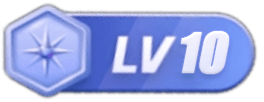WordPress is a feature-rich platform that makes it easy to build a variety of websites, such as personal blogs, online portfolios to showcase one's work, or even e-commerce stores to trade goods. When building a WordPress website, content is usually organized into two main forms: posts (usually short articles or news) and pages (usually static information or detailed descriptions of specific topics). In this way, WordPress provides an intuitive and efficient way to manage content, no matter what type of website you want to create.
![Image[1] - How to efficiently build and manage website content using WordPress posts and pages - Photon Fluctuation Network | Professional WordPress Repair Service, Global Reach, Fast Response](https://www.361sale.com/wp-content/uploads/2024/05/2024052001484114.png)
I. WordPress posts and pages: timeliness
When you launch a WordPress site, some content may stay the same for a long time, such as "About Us" descriptions, company history and contact information. These are usually added to the main menu and presented to visitors as static information on the site. The content of these pages is less likely to change frequently, but they can still be updated as needed. For example, if the company moves to a new address or launches a new service, this information can be updated at any time.
Unlike pages, posts are more flexible and dynamic. They are suitable for posting content that needs to be updated on a regular basis, such as a company'sLatest News, practical guides or insights into current industry trends. The information in a post may become less relevant over time, especially in a fast-moving industry. The good news is that it's easy to update the content of a post, or make comprehensive updates and adjustments as needed.
In short, pages are used to display static information about the site, while posts are used to publish content that needs to be updated on a regular basis.
![Image [2] - How to efficiently build and manage website content using WordPress posts and pages - Photon Fluctuation Network | Professional WordPress Repair Service, Global Reach, Fast Response](https://www.361sale.com/wp-content/uploads/2024/05/2024052001491975.png)
Second, WordPress posts and pages: organizational structure
When comparing posts and pages in WordPress, one of the key differences in how they are organized is the hierarchy of the page.
Pages can often have subpages that form a hierarchy. For example, you can have subpages for the "About" page, such as "About Us", "About Our Team", etc. to show different aspects of your company in more detail. This makes it easier for visitors to navigate and understand the content of your website.
- firms
- histories
- Mission and values
- teams
- Our marketing guru
- Our SEO Experts
This clear website layout makes it easy for visitors to find the information they need. For example, if they want to learn more about the company and its employees, they know at a glance to go to "About Us"The page lookup.
Also, by using categorization methods like categories and tags, the articles on the site can be organized in an orderly manner. This makes it easy for readers to search for content on topics of interest.
If there are articles about digital marketing, you can sort the posts according to the following categories:
- social media
- Email Marketing
- SEO
- write an article
It is also possible to categorize different types of WordPress posts using tags, for example:
- Operation Guide
- Tips and Tricks
- Product Reviews
Posts can also be categorized by author, which allows authors to view other posts by a specific author.
![Image [3] - How to efficiently build and manage website content using WordPress posts and pages - Photon Flux | Professional WordPress Repair Service, Global Reach, Fast Response](https://www.361sale.com/wp-content/uploads/2024/05/2024052001494579.png)
Three,WordPress Posts and Pages: Interactivity
Let's talk about interactivity design in WordPress websites, specifically how pages and posts interact with visitors.
First of all, what is interactivity? Simply put, it's the ability of a website's content to "respond" or "interact" with you. In WordPress, posts usually allow readers to comment by default. This way, when you finish reading a post, if you have any questions or thoughts, you can leave a comment directly below to discuss with the author or other readers.
But if you feel that the default commenting options are not enough for your needs, don't worry! You can provide your readers with more options by installing various commenting plugins. For example, some plugins allow you to comment directly through your Facebook account, which is very convenient.
Well, unlike posts, WordPress pages don't come with comments by default. But that doesn't mean the page can't interact with visitors. You can add some encouraging language on the page, such as inviting users to inquire about a quote or subscribe to a newsfeed, which also promotes social engagement.
In addition, the page can contain many other interactive elements. For example, you can add a contact form that allows visitors to contact you directly, or add a poll or survey to collect user opinions and feedback, or embed an RSS feed that allows visitors to easily access the latest content on your site.
Whether it's a WordPress page or a post, there are many ways to enable interaction with your visitors and make the site more lively and interesting.
![Image [4] - How to efficiently build and manage website content using WordPress posts and pages - Photon Fluctuation Network | Professional WordPress Repair Service, Global Reach, Fast Response](https://www.361sale.com/wp-content/uploads/2024/05/2024052001512297.jpg)
Fourth, when to use WordPress posts and pages?
When we consider publishing content on WordPress, it's crucial to understand the difference between Posts and Pages so that we can make the best choice.
1. When you should use WordPress posts
Articles will be created more often than pages.
With an online store or a rich product portfolio, it is still a great way to keep your website content fresh and attract more visitors by publishing posts. For example, posts can be used to share your work in progress, information about new products hitting the shelves, or other interesting content, which not only attracts the attention of existing users, but also draws more traffic from search engines. Next, let's look at some other examples of common uses for posts in WordPress:
- Sharing new knowledge of the industry: Publish the latest industry news related to your business or products to keep visitors informed of market trends.
- Products: Detailed presentation of the new product, including features, uses, and purchasing options, to motivate potential customers to buy.
- Tutorials & Guides: Provide tutorials and guides related to products or services to help users better understand and use them.
- Promotions: Post information about limited-time offers, discounts, or promotions to encourage users to place orders as soon as possible.
- Customer Stories & Cases: Share customers' experience and success stories to increase the credibility and attractiveness of the brand.
- Company Culture and Dynamic: Post company events, team profiles, company culture and more to give visitors a deeper understanding of your brand.
By publishing these high-quality posts on a regular basis, you can keep your site active, attract more visitors, and increase conversions.
It is also possible to add posts to specific pages in WordPress. This enhances the user experience by ensuring that posts are well organized and easy to navigate.
![Image [5] - How to use WordPress posts and pages to efficiently build and manage website content - Photon Fluctuation Network | Professional WordPress Repair Service, Global Reach, Fast Response](https://www.361sale.com/wp-content/uploads/2024/05/2024052001520047.jpg)
2. When you should use WordPress pages
At the heart of every WordPress website is one page - that's the homepage. But in addition to the homepage, you should also create pages that present key information about your business or project. Here are some popular examples of WordPress pages, described in a more layman's terms:
- homepage: This is the face of the website and usually displays the most important information, such as the brand story, main products or services, and contact information.
- About Us: This page tells visitors who the company is, its history, values, and what sets it apart.
- service or product: Describe in detail all services or products offered, including their features, benefits and prices.
- Contact Us: Provide ways for visitors to contact you, such as e-mail addresses, phone numbers, addresses, and online forms.
- Frequently Asked Questions (FAQ): List and answer frequently asked questions from customers to minimize their concerns and provide needed information quickly.
- Blog or News: Publish business-related articles, news or industry insights to showcase expertise and updates.
- Case studies or client testimonials: Share success stories and customer testimonials that demonstrate the quality and value of your product or service.
- privacy policy: Explain to visitors how you collect, use and store their personal information.
- Terms and conditions: Lists the terms and conditions that need to be followed when using the website, products or services.
By creating these pages, you can provide visitors with clear, detailed information that will make it easier for them to learn about your business and make a buying decision.
V. Conclusion
In WordPress, Posts and Pages are the two basic types of content, and they each play a different role.
Pages are used to display information that doesn't change often, so-called "evergreen content". For example, you could have a page that describes your company's history, your team members, the services you offer, the products you showcase, and your contact information. Once this information is set, it doesn't need to be updated very often.
Posts, on the other hand, come with a publish date and are better suited for posting content that needs to be kept up to date. For example, you can post tutorials, news updates, product reviews, etc. to keep your readers up to date.
When readers view both types of content, they interact with the site differently. Articles typically encourage readers to comment and share their opinions and thoughts. Pages, on the other hand, contain more static elements such as contact forms or clear calls to action (CTAs), such as "contact us," "subscribe to news," or "request a quote," that direct visitors to take further action. that lead visitors to take further action.
In short, a page is a window that displays static information, while an article is a platform for real-time communication with readers.
Link to this article:https://www.361sale.com/en/9976
The article is copyrighted and must be reproduced with attribution.
























![Emoji[lenghan]-Photonflux.com | Professional WordPress Repair Service, Worldwide, Fast Response](https://www.361sale.com/wp-content/themes/zibll/img/smilies/lenghan.gif)









No comments